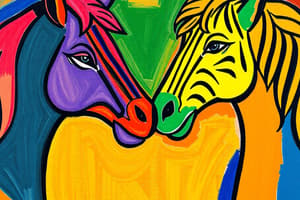Podcast
Questions and Answers
How does the neutral stimulus become a conditioned stimulus?
How does the neutral stimulus become a conditioned stimulus?
- By eliciting the conditioned response (correct)
- By not being associated with the unconditioned stimulus
- By being presented after the unconditioned stimulus
- By not being associated with the conditioned response
In taste aversion, what is the interval between the conditioned stimulus and the unconditioned stimulus?
In taste aversion, what is the interval between the conditioned stimulus and the unconditioned stimulus?
- Several days
- A week
- Several hours (correct)
- A few minutes
How does extinction impact the conditioned response in classical conditioning?
How does extinction impact the conditioned response in classical conditioning?
- Decreases the conditioned response (correct)
- Increases the conditioned response
- Prevents the conditioning from happening
- Completely eliminates the conditioned response
Why might taste aversion be considered an evolutionary adaptation?
Why might taste aversion be considered an evolutionary adaptation?
What makes taste aversion unique in terms of conditioning?
What makes taste aversion unique in terms of conditioning?
Which factor contributes to the development of taste aversion?
Which factor contributes to the development of taste aversion?
In classical conditioning, what role does the unconditioned stimulus play?
In classical conditioning, what role does the unconditioned stimulus play?
'Extinction' in classical conditioning refers to:
'Extinction' in classical conditioning refers to:
What happens during acquisition in classical conditioning?
What happens during acquisition in classical conditioning?
Why is taste aversion considered unique in classical conditioning?
Why is taste aversion considered unique in classical conditioning?
Flashcards are hidden until you start studying





